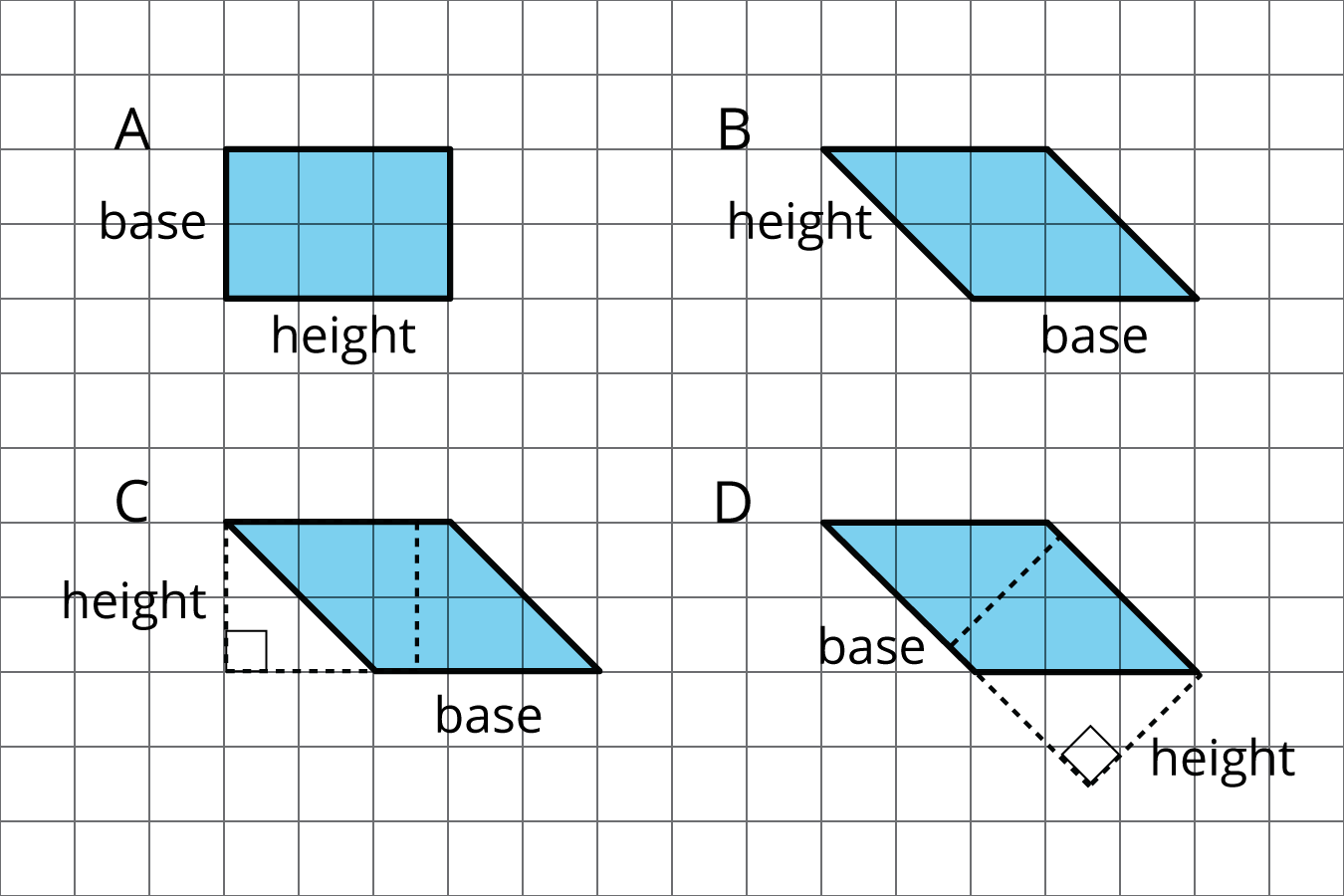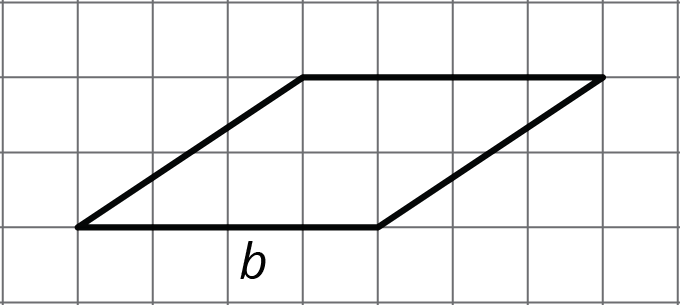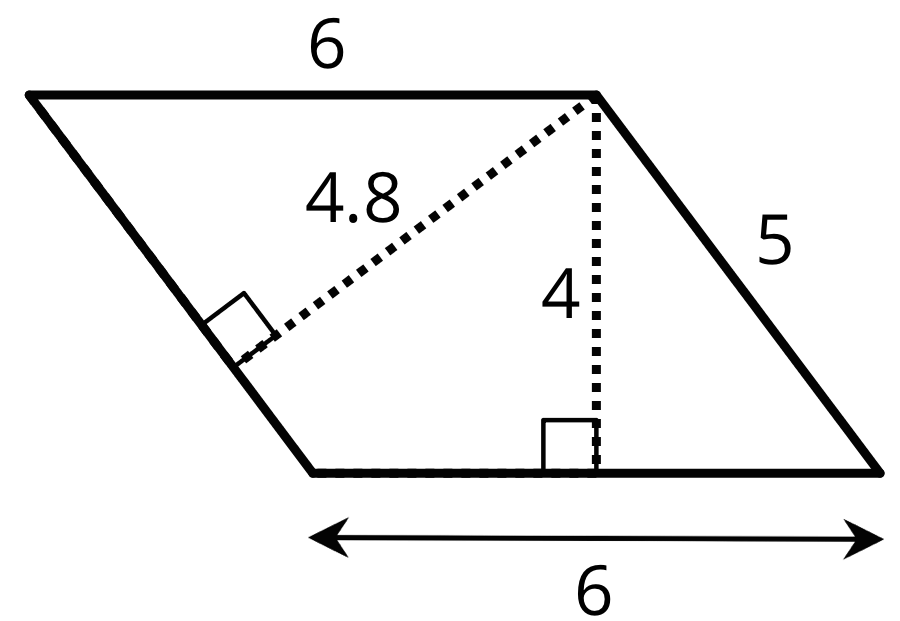Lesson 5
Bases and Heights of Parallelograms
Problem 1
Select all parallelograms that have a correct height labeled for the given base.

A
B
C
D
Solution
For access, consult one of our IM Certified Partners.
Problem 2
The side labeled \(b\) has been chosen as the base for this parallelogram.

Draw a segment showing the height corresponding to that base.
Solution
For access, consult one of our IM Certified Partners.
Problem 3
Find the area of each parallelogram.

Solution
For access, consult one of our IM Certified Partners.
Problem 4
If the side that is 6 units long is the base of this parallelogram, what is its corresponding height?

6 units
4.8 units
4 units
5 units
Solution
For access, consult one of our IM Certified Partners.
Problem 5
Find the area of each parallelogram.

Solution
For access, consult one of our IM Certified Partners.
Problem 6
Do you agree with each of these statements? Explain your reasoning.
- A parallelogram has six sides.
- Opposite sides of a parallelogram are parallel.
- A parallelogram can have one pair or two pairs of parallel sides.
- All sides of a parallelogram have the same length.
- All angles of a parallelogram have the same measure.
Solution
For access, consult one of our IM Certified Partners.
(From Unit 1, Lesson 4.)Problem 7
A square with an area of 1 square meter is decomposed into 9 identical small squares. Each small square is decomposed into two identical triangles.
- What is the area, in square meters, of 6 triangles? If you get stuck, consider drawing a diagram.
- How many triangles are needed to compose a region that is \(1\frac 12\) square meters?
Solution
For access, consult one of our IM Certified Partners.
(From Unit 1, Lesson 2.)